Greasley Castle: Project reveals 'astonishing' secrets
- Published
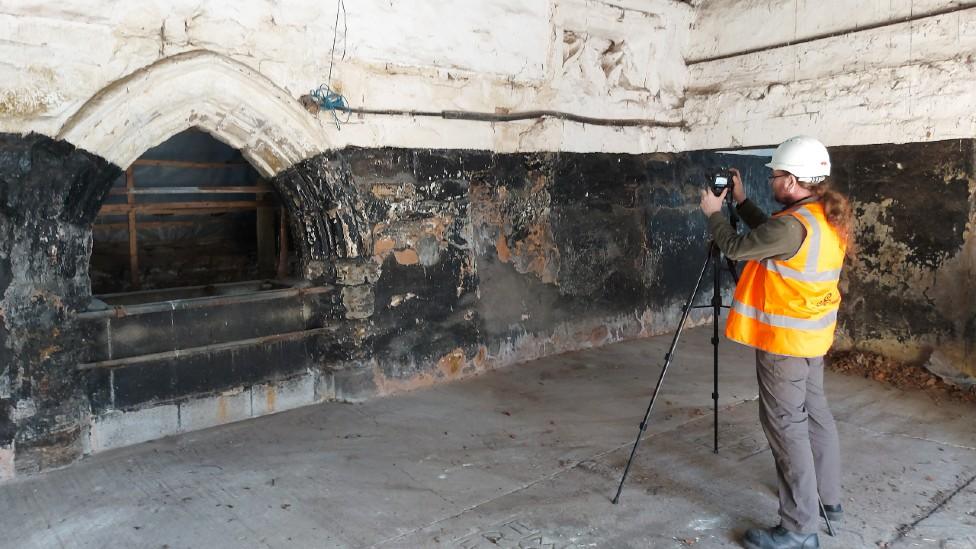
Remains of an arched doorway, which once led into the great hall, survive in the farm buildings
A "magnificent" lost castle, which once rivalled one of the finest in Britain, has been identified amid a series of grassy mounds and old farm buildings.
Greasley Castle, in Nottinghamshire, was built as a statement of prestige in the 14th Century.
A new study has shown it was a large courtyard castle which surpassed nearby Haddon Hall for size and opulence.
Dr James Wright said: "The project has allowed us to understand this astonishing place for the first time."
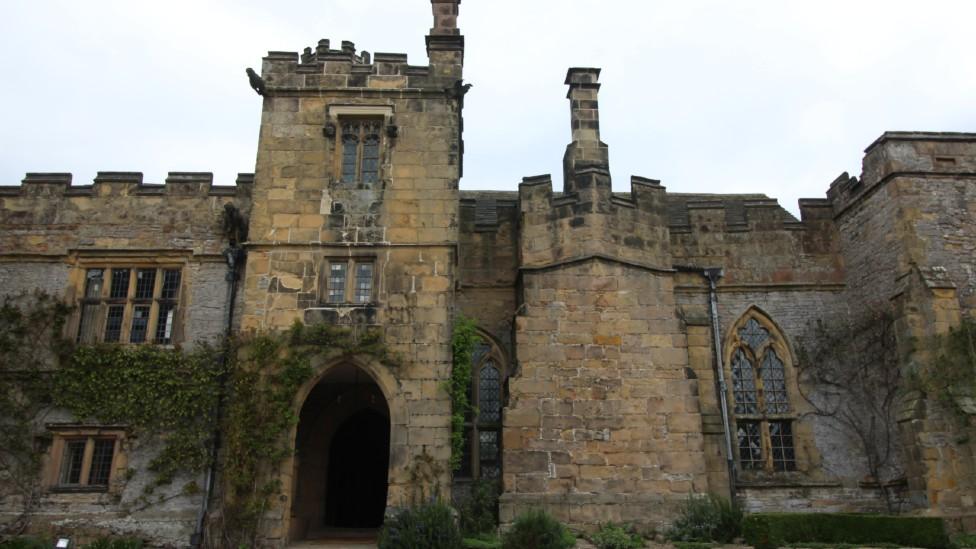
How it started - Greasley was similar in scale and style to Haddon Hall near Bakewell, Derbyshire
The castle was built in the mid-14th Century for the soldier and politician Nicholas de Cantelupe.
At its height, in 1343, it hosted the Archbishop of York but after a later owner vainly fought for Richard III at Bosworth in 1485, it was confiscated by the crown and seemingly vanished a century later.
Dr Wright said: "Thousands of people drive past this every day and it does look just like a set of ramshackle farm buildings.
"It's really hard to get a handle on what was once here. It really has fallen on hard times."
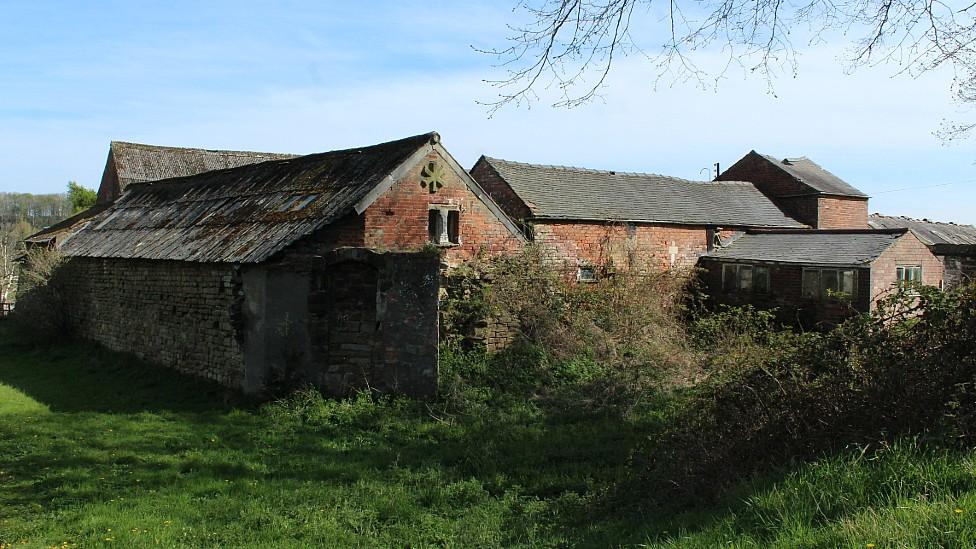
The north wall of the castle remains as part of a barn, with the stub of a turret in the foreground
A study backed by the Castles Trust has found enough evidence to establish it was a courtyard castle - a set of buildings around an open space, built more for luxury than defence.
Clues in the remaining buildings reveal it had corner turrets and a great hall accessed via an impressive doorway and illuminated by tracery windows.
Fragments of stonework revealed "magnificent" decoration including carved head sculptures, moulded copings, and the crown of a vault.
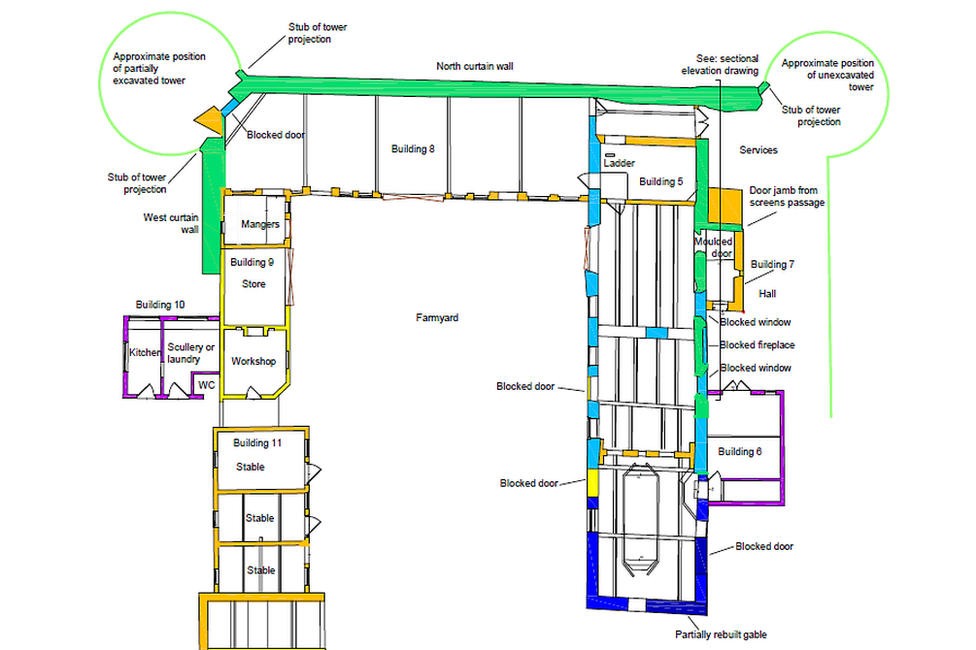
A phased plan of the farm buildings - with the original castle walls in green
Dr Wright said: "The castle was very similar to Haddon Hall in Derbyshire.
"It was built around the same time and the layout of the great hall is comparable.
"The owners of castles were often inspired by one another's buildings - although Greasley was slightly bigger than Haddon."
While local tradition claimed it was flattened in the English Civil War, Dr Wright said the end was more mundane.
The place was already gone by 1596 when it was described as a roofless ruin.
"These are expensive places to maintain and if the family lost its money, they went to ruin," he said.
"It you want to find the rest of Greasley Castle, look in the walls of the local farms and cottages."

Follow BBC East Midlands on Facebook, external, on Twitter, external, or on Instagram, external. Send your story ideas to eastmidsnews@bbc.co.uk, external.
- Published7 November 2021
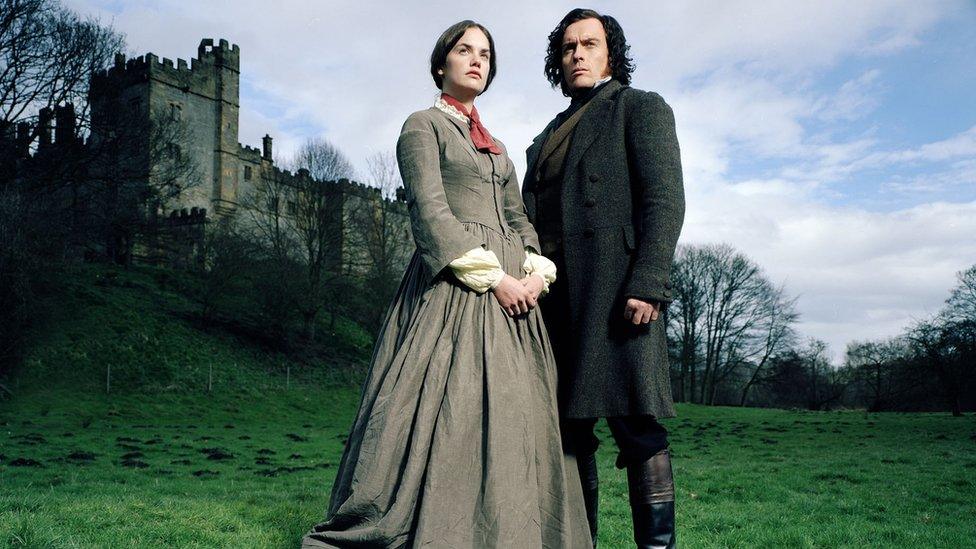
- Published17 December 2019
